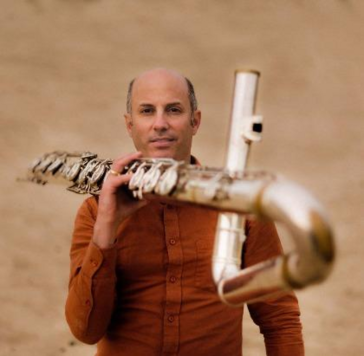This OP was deployed in two phases, focusing on Vehicle-to-Home (V2H) and Vehicle-to-Grid (V2G). Its first phase took place at a private residence in Loughborough and ran from March 2017 up to December 2017. This phase 1 is also referred to as the ‘Loughborough pilot’. The second phase took place from February 2020 until present at a comparable residence in Burton-upon-Trent, thereafter, referred to as the ‘Burton pilot’ or ‘phase 2’. Both pilots included bi-directional chargers, Electric Vehicles (EV), Battery Static Storage (BSS) and rooftop solar PhotoVoltaic panels (PV).The main goals of this pilot were to demonstrate the added value of V2H and V2G of using additional energy storage and PV in households.Challenges encountered in the project include interoperability issues, particularly in phase 1, and the unforeseen development of the homeowner selling his house, meaning a new location needed to be found. However, this challenge ultimately provided an excellent opportunity to implement lessons for interoperability and to act upon the recommendations from the intermediate analysis of the Loughborough pilot. This report is mainly focussed on phase 1 (Loughborough), and additional analysis for Burton-upon-Trent (phase 2) can be found in the appendix.

De lvb-pilot in Rotterdam-Zuid heeft tot doel om te voorkomen dat mensen met een licht verstandelijke beperking (lvb) in aanraking komen met justitie en om recidive te verminderen. Dit doel hoopte men te bereiken door vroegsignalering en betere bejegening van mensen met een lvb. In de pilot is langs twee sporen gewerkt.
MULTIFILE

Patiëntdata uit vragenlijsten, fysieke testen en ‘wearables’ hebben veel potentie om fysiotherapie-behandelingen te personaliseren (zogeheten ‘datagedragen’ zorg) en gedeelde besluitvorming tussen fysiotherapeut en patiënt te faciliteren. Hiermee kan fysiotherapie mogelijk doelmatiger en effectiever worden. Veel fysiotherapeuten en hun patiënten zien echter nauwelijks meerwaarde in het verzamelen van patiëntdata, maar vooral toegenomen administratieve last. In de bestaande landelijke databases krijgen fysiotherapeuten en hun patiënten de door hen zelf verzamelde patiëntdata via een online dashboard weliswaar teruggekoppeld, maar op een weinig betekenisvolle manier doordat het dashboard primair gericht is op wensen van externe partijen (zoals zorgverzekeraars). Door gebruik te maken van technologische innovaties zoals gepersonaliseerde datavisualisaties op basis van geavanceerde data science analyses kunnen patiëntdata betekenisvoller teruggekoppeld en ingezet worden. Wij zetten technologie dus in om ‘datagedragen’, gepersonaliseerde zorg, in dit geval binnen de fysiotherapie, een stap dichterbij te brengen. De kennis opgedaan in de project is tevens relevant voor andere zorgberoepen. In dit KIEM-project worden eerst wensen van eindgebruikers, bestaande succesvolle datavisualisaties en de hiervoor vereiste data science analyses geïnventariseerd (werkpakket 1: inventarisatie). Op basis hiervan worden meerdere prototypes van inzichtelijke datavisualisaties ontwikkeld (bijvoorbeeld visualisatie van patiëntscores in vergelijking met (beoogde) normscores, of van voorspelling van verwacht herstel op basis van data van vergelijkbare eerdere patiënten). Middels focusgroepinterviews met fysiotherapeuten en patiënten worden hieruit de meest kansrijke (maximaal 5) prototypes geselecteerd. Voor deze geselecteerde prototypes worden vervolgens de vereiste data-analyses ontwikkeld die de datavisualisaties op de dashboards van de landelijke databases mogelijk maken (werkpakket 2: prototypes en data-analyses). In kleine pilots worden deze datavisualisaties door eindgebruikers toegepast in de praktijk om te bepalen of ze daadwerkelijk aan hun wensen voldoen (werkpakket 3: pilots). Uit dit 1-jarige project kan een groot vervolgonderzoek ‘ontkiemen’ naar het effect van betekenisvolle datavisualisaties op de uitkomsten van zorg.
Diverse partijen, zowel marktpartijen als kennisinstellingen, gaan in 2020 samenwerken in een pilot om te toetsen in hoeverre zij de plant kardoen (familie van de artisjok distel) in haar volle potentieel kunnen gebruiken voor diverse commerciële doeleinden, zoals bloemen, voedsel, composiet en een lamp. Er wordt in deze pilot onderzoek gedaan naar: - Gebruik van reststromen als bodemverbeteraar - Teelt van kardoen - Verwerking van kardoen
Students in Higher Music Education (HME) are not facilitated to develop both their artistic and academic musical competences. Conservatoires (professional education, or ‘HBO’) traditionally foster the development of musical craftsmanship, while university musicology departments (academic education, or ‘WO’) promote broader perspectives on music’s place in society. All the while, music professionals are increasingly required to combine musical and scholarly knowledge. Indeed, musicianship is more than performance, and musicology more than reflection—a robust musical practice requires people who are versed in both domains. It’s time our education mirrors this blended profession. This proposal entails collaborative projects between a conservatory and a university in two cities where musical performance and musicology equally thrive: Amsterdam (Conservatory and University of Amsterdam) and Utrecht (HKU Utrechts Conservatorium and Utrecht University). Each project will pilot a joint program of study, combining existing modules with newly developed ones. The feasibility of joint degrees will be explored: a combined bachelor’s degree in Amsterdam; and a combined master’s degree in Utrecht. The full innovation process will be translated to a transferable infrastructural model. For 125 students it will fuse praxis-based musical knowledge and skills, practice-led research and academic training. Beyond this, the partners will also use the Comenius funds as a springboard for collaboration between the two cities to enrich their respective BA and MA programs. In the end, the programme will diversify the educational possibilities for students of music in the Netherlands, and thereby increase their professional opportunities in today’s job market.
